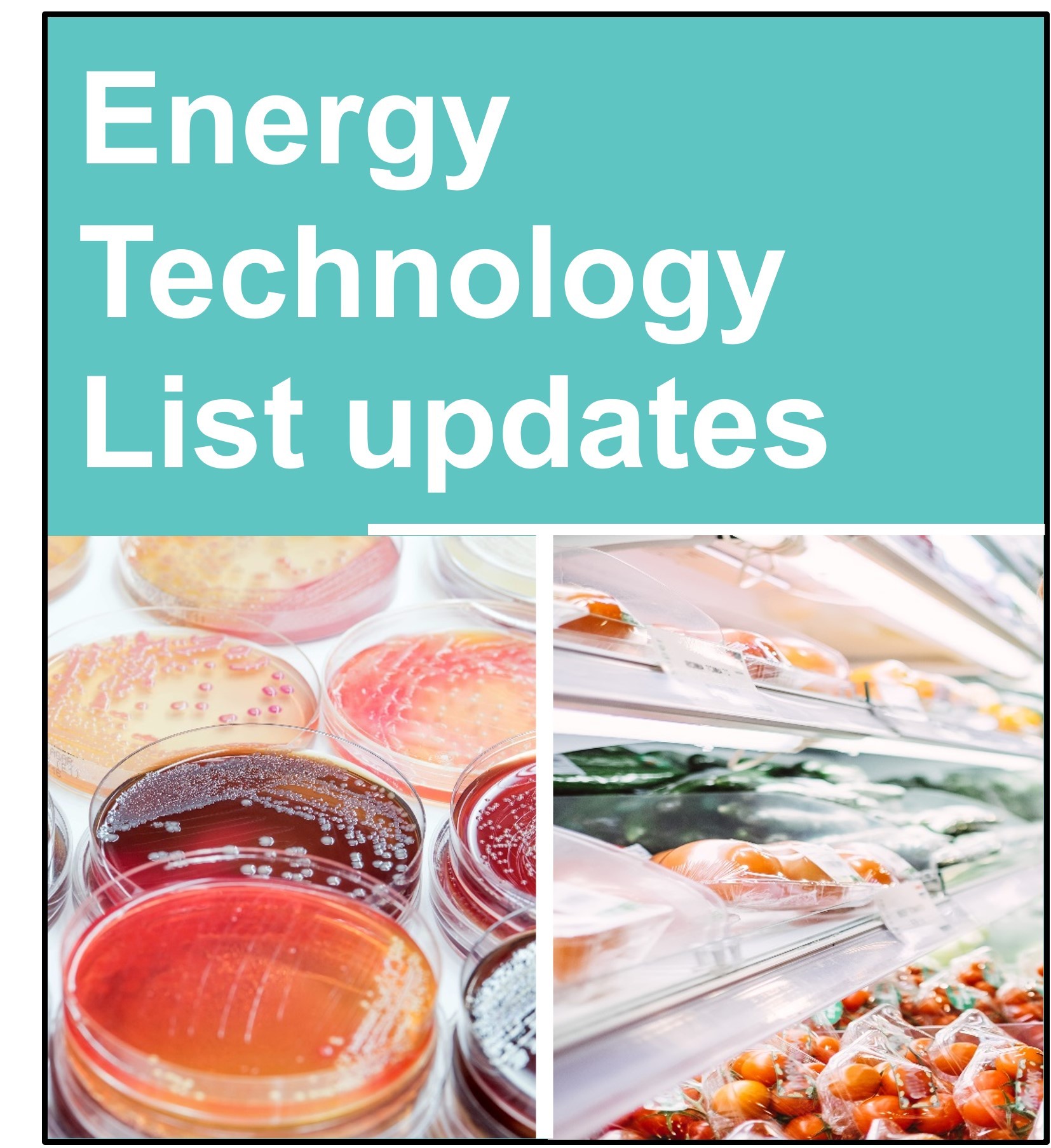Energy Technology List updates

A number of updates and new initiatives are planned for the UK Energy Technology List (ETL). ‘Laboratory Grade Refrigerators and Freezers’ will be added to the ETL and updates will be applied to ‘Retrofit Measures for Open Fronted Refrigerated Display Cabinets’.
Laboratory Grade Refrigerators and Freezers
A stakeholder consultation has begun to develop the criteria to include Laboratory Grade Refrigerators and Freezers on the ETL. It is planned to include the following categories of laboratory cabinets:
- Laboratory grade refrigerators (temperature range -2°C to +20°C).
- Laboratory grade freezers (temperature range -60°C to -3°C).
- Ultra-low temperature (ULT) freezers (temperature range -90°C to -40°C).
- Cryogenic freezers (temperature range -155°C to -125°C).
Cabinets must be designed for laboratory use, have temperature alarms and temperature displays. There is also a proposal to restrict the Global Warming Potential (GWP) of the refrigerants used. Much of the test methodology and energy efficiency requirements still need to be defined, but the performance metric used is stated to be Watts/litre/day. Tests to be applied are indicated to include pull down times, warm up times, stable performance tests, door opening tests and an assessment of the temperature uniformity in the cabinet. It appears that much of the methodology and final performance metrics will be developed during the consultation period.
Retrofit Measures for Open Fronted Refrigerated Display Cabinets
This category which was previously called ‘Curtains, Blinds, Doors and Covers for Refrigerated Display Cabinets’ covers:
- Strip curtains (transparent, flexible strips hung adjacent to each other, and fastened at both ends to neighbouring strips, in a manner that allows temporary openings to be made in the curtain for the purpose of removing items from the cabinet).
- Blinds (flexible fabric mounted on a roller mechanism that enables the blind to be deployed across the display window of the cabinet when the retail outlet is closed or during trading).
- Transparent sliding or hinged doors (doors with a heat reflective coating, mounted in a mechanism that enables the doors to be opened when items need to be removed from the cabinet).
- Enhanced air flow management systems (designed to optimise the descending air curtain at the front of an open refrigerated display cabinet in order to reduce the infiltration of ambient air).
A number of recommendations have been made to update this category within the ETL. These include:
- A change to include enhanced air flow solutions which were not previously included.
- Including technologies applied to existing refrigerated display cabinets in stores.
- Removing transparent chest freezer covers (bubble lids) from the category.
- Creating an ETL testing standard for RDC retrofit measures, to establish the energy savings from their use. The test method will be based on BS EN ISO 23953-2 Refrigerated display cabinets – classification, requirements and testing.
- The introduction of a requirement for manufacturers to provide information on the energy savings achieved by the technologies (currently there is no requirement for such information).
Products are planned to be tested to prove their performance using BS EN ISO 23953-2 (2015) at climate class 3 test conditions (25°C, 60% RH). Products will be tested using a suitable open fronted retail display cabinet with and without the technology attached at one of the defined cabinet temperature classifications (M0, M1 or M2). The percentage energy saving will then be calculated and presented. The usual ETL verification (self-tested and verified or cross-checked by an independent body, witnessed testing or independent testing) and representative testing rules are applied.
If you would like further information on these ETL updates then please contact Judith Evans at RD&T (j.a.evans@rdandt.co.uk).